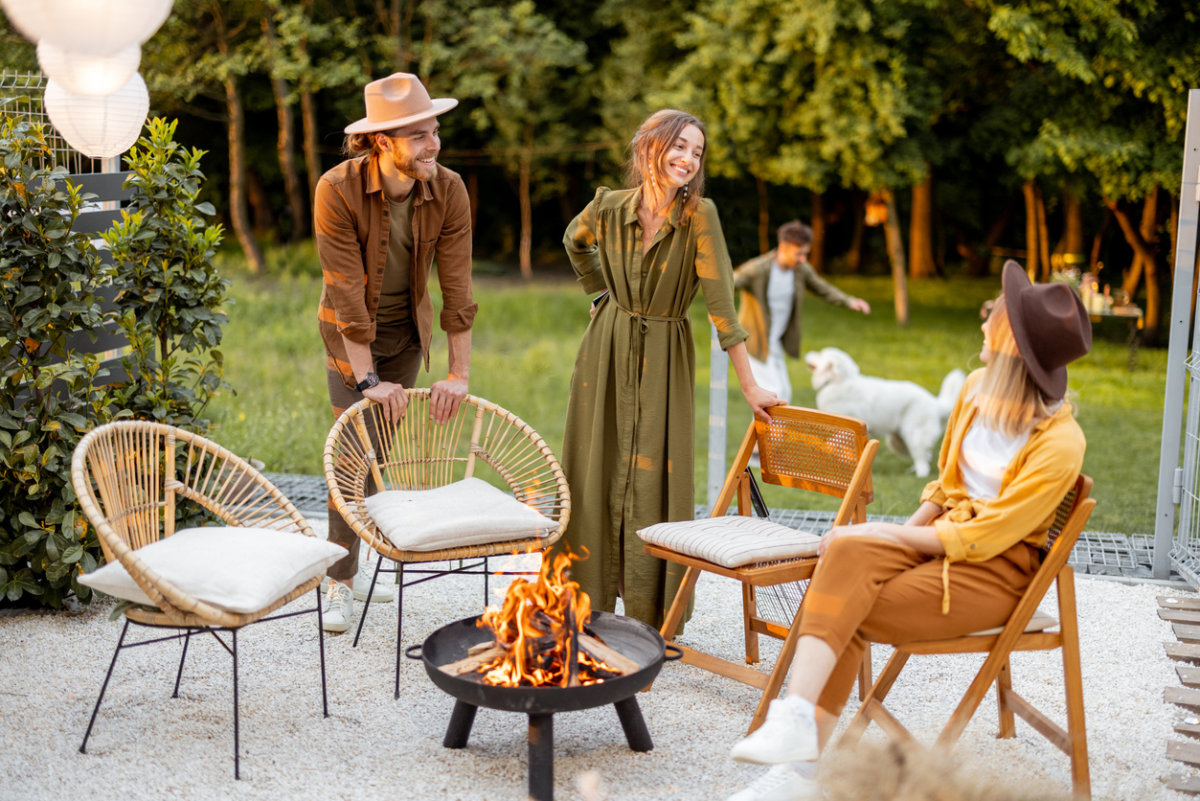
Consider downsizing your lawn and replacing it with a patio, trees and shrubs or a vegetable garden. Our native bees will thank you.
Would you like to help our native bees—and reduce the amount of time and energy you spend maintaining your landscape? Consider downsizing your lawn.
A Bee Friendly Lawn is the right size for the way you live and use your landscape. It has lawn in areas where you use and enjoy it, but doesn’t have grass in areas where it is hard to grow or maintain.
Consider downsizing your lawn in these areas
Begin by assessing where you use your lawn as well as where it grows well and where it struggles.
Shady areas. Lawns need a minimum of four hours of direct sun each day. Your lawn will grow poorly in shade, and it will be more prone to problems with weeds and moss as a result.
Steep slopes and areas that are tough to mow. It is tough to mow, fertilize and water a lawn on steep slopes. Also consider removing the lawn in areas that are hardest to mow, such as the corners of the yard, next to fences and beneath trees with low branches.
Shorelines. A lawn doesn’t provide shade for fish, including threatened salmon, and the aquatic bugs they eat. And when you water the lawn, it will carry fertilizers, and pesticides if you use them, into the stream or lake.
Little-used areas. Lawns are great for high-traffic areas, playing games and lounging. But do you really want to spend time and money mowing, fertilizing and watering your lawn in areas that are rarely used?
Ideas for lawn replacements
Trees and shrubs
The most common method for reducing lawn size is to replace the turf with beds of perennial shrubs and perhaps a tree or two, along with other foundation plantings such as perennial flowers and ornamental grasses. Consider choosing native varieties that will provide food and shelter for bees, birds, butterflies and other wildlife.
A tiered planting will be most attractive, and taller plants will shade shorter plants, helping to reduce weeds and watering needs. Once they are established, these plantings require less time and energy than lawn maintenance. And they provide more seasonal interest than a lawn, with colors, shapes and aromas throughout the year. If you choose evergreen shrubs, they will shade out weeds all year long, reducing weed growth.
Hardscapes
You could enjoy your landscape more by adding spaces for outdoor living. Consider how you would like to use your outdoor space. Is it mostly for quiet relaxation or would you like to entertain family and friends? You might want to install a patio, deck or outdoor room with chairs, tables and couches for lounging or dining. You could add an outdoor kitchen, fireplace or fire pit. Perhaps you would like a waterfall or pond, or a walkway for easy access.
Vegetable gardens and other edibles
You may enjoy growing your own organic food. Your homegrown lettuce, carrots, greens and other crops will be a delicious and healthy addition to your dinner table. And it can be satisfying to grow your own food. You could teach your kids about food gardening and help them understand where their food comes from. In addition to vegetables, you might choose to plant berries and fruit trees.
Ground covers
Ground covers spread across the ground but do not grow tall, so you won’t need to cut or mow. They provide a variety of textures and colors. You can create seasonal interest by choosing ground covers that flower or change color. Most ground covers are perennial, and some are evergreen.
Taller ground covers shade out weeds much more effectively than short ones, so it’s best to choose plants that grow at least a few inches high. Ground covers that grow densely will have fewer weeds. They enhance the soil by acting as a mulch, and some ground covers fix nitrogen.
Like all new plantings, you will need to mulch, weed and water ground covers during the first couple of growing seasons. Once established, they are low-maintenance plants.
Mulch
You could use mulches that don’t break down quickly, such as bark chips, hazelnut shells or gravel, to replace the lawn under trees and areas where you don’t plan to add shrubs. A thick layer (a few inches deep) of mulch will greatly reduce weeds and make it much easier to pull any weeds that grow.
We can help
Our expert landscape designers and installation crews can help you update your landscape. You will enjoy your new spaces and be happy you’re spending less time on lawn maintenance—and helping the bees too.
More about downsizing your lawn
- How to Reduce the Size of Your Lawn, Earth Easy Guides.
- 16 Landscaping Ideas for Designing a Beautiful Yard with No Lawn, Better Homes and Gardens.
- Reduce the size of your lawn—and your yard work, Consumer Reports.
More tips on growing a Bee Friendly Lawn
In addition to downsizing your lawn, we have six other tips on how to grow a Bee Friendly Lawn. #BeeFriendlyLawn.

